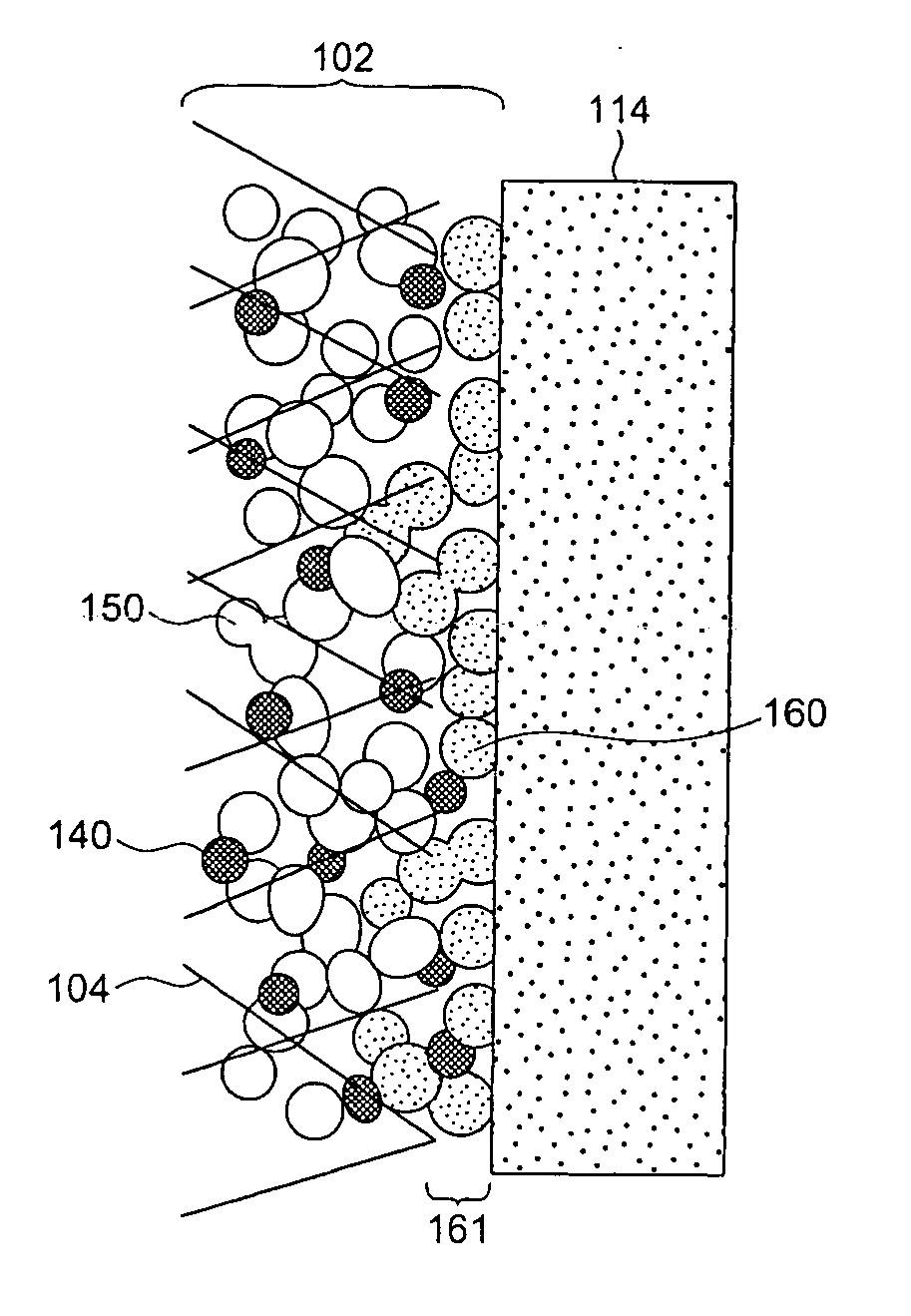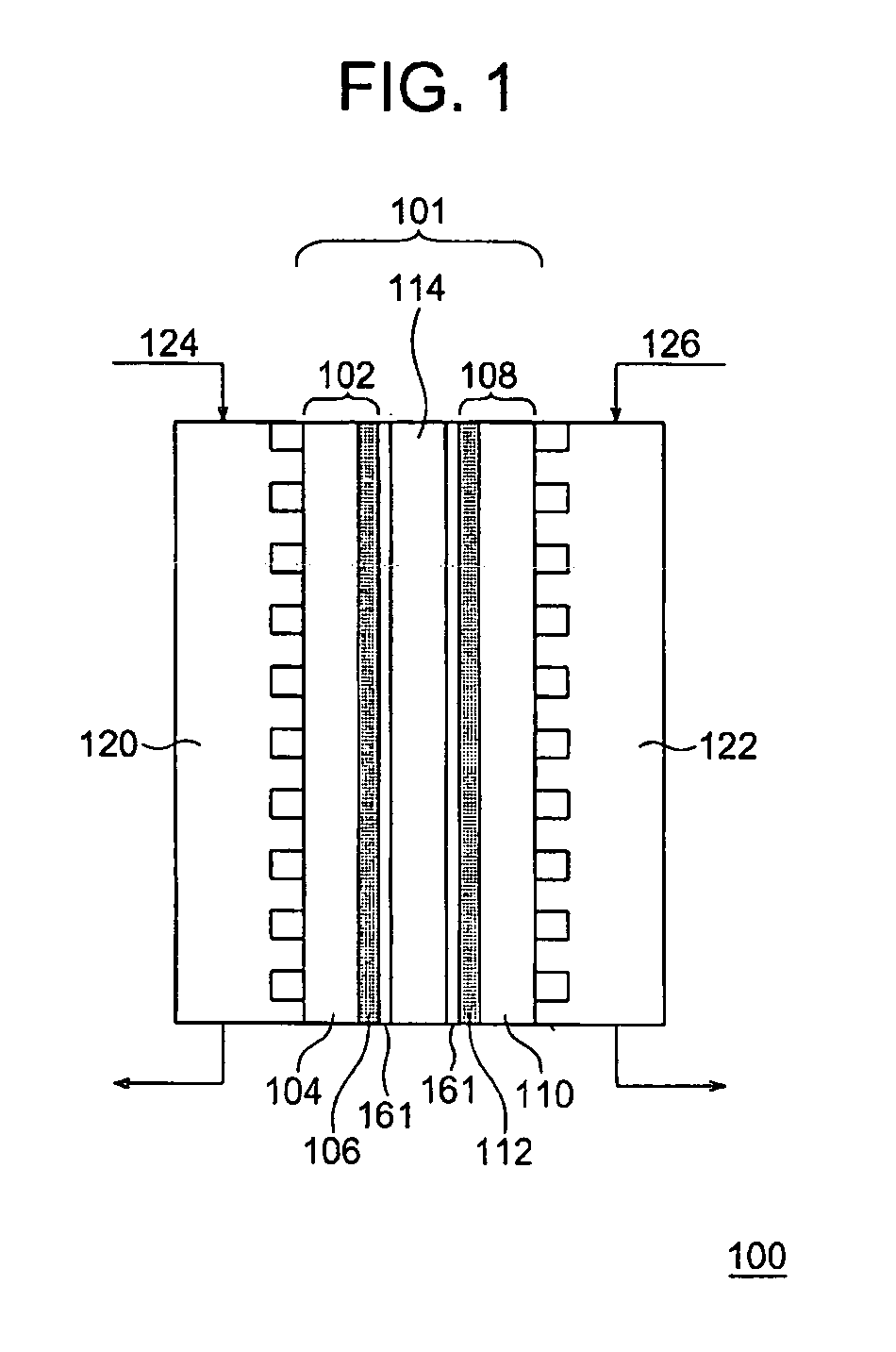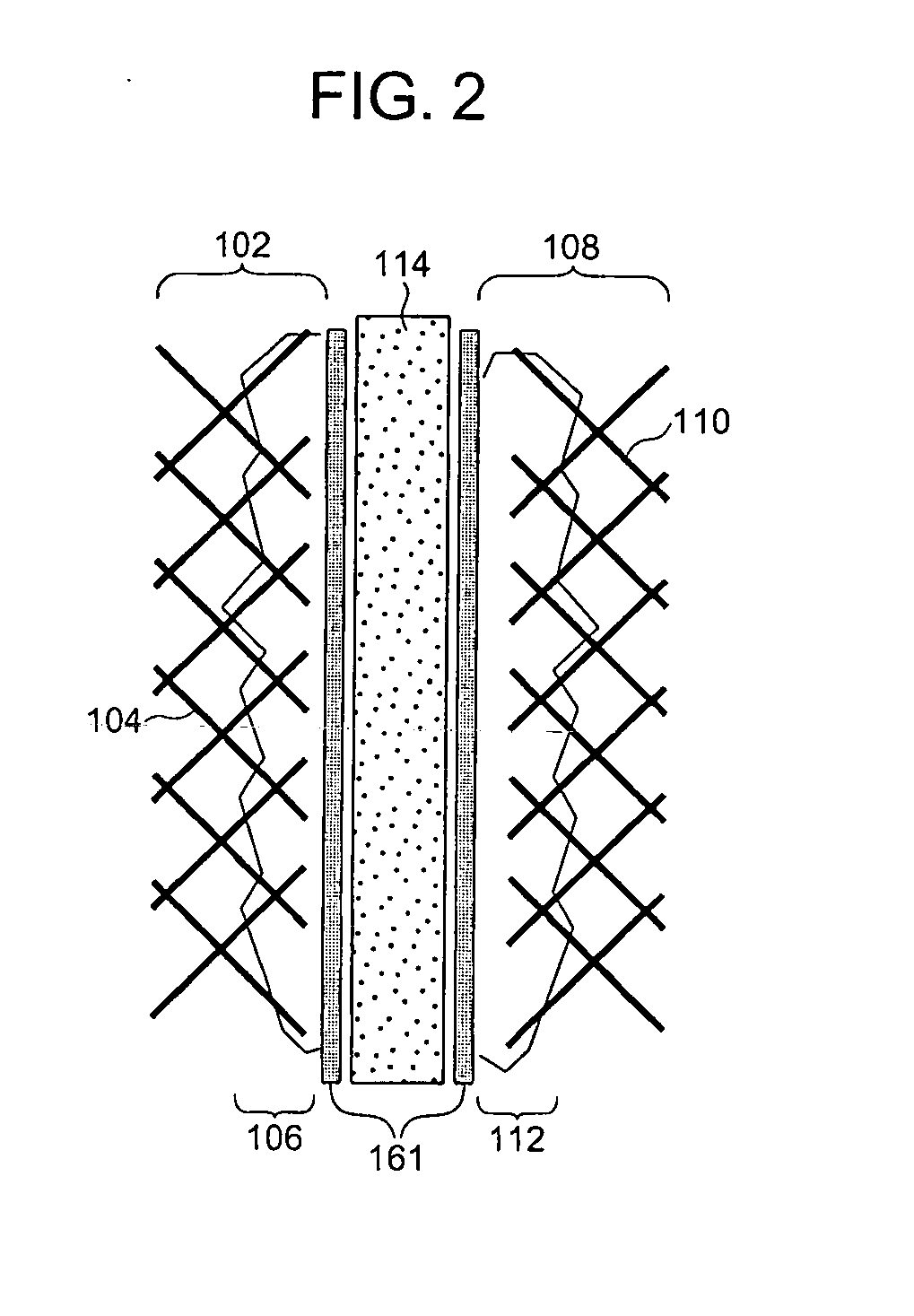Fuel cell, fuel cell electrode and method for fabricating the same
a fuel cell and electrode technology, applied in the direction of cell components, final product manufacturing, sustainable manufacturing/processing, etc., can solve the problems of inability to obtain excellent cell characteristics, inability to obtain cell worth evaluating, and inability to meet the requirements of a single cell performan
- Summary
- Abstract
- Description
- Claims
- Application Information
AI Technical Summary
Benefits of technology
Problems solved by technology
Method used
Image
Examples
embodiment
[0061] First to third Embodiments of the present invention will be hereinafter described in detail.
first embodiment
[0062] As shown in FIG. 1, in a fuel cell of the present Embodiment, a membrane electrode assembly 101 is configured by a fuel electrode 102, an oxidant electrode 108 and a solid polymer electrolyte membrane 114. The fuel electrode 102 is configured by a substrate 104 and a catalyst layer 106. The oxidant electrode 108 is configured by a substrate 110 and a catalyst layer 112. Respective adhesion layers 161 are disposed between the solid polymer electrolyte membrane 114 and the fuel electrode 102 and between the solid polymer electrolyte membrane 114 and the oxidant electrode 108. A plurality of the membrane electrode assemblies 101 are electrically connected among one another through fuel electrode-side separators 120 and oxidant electrode-side separators 122, thereby fabricating the fuel cell 100.
[0063] The fuel electrode 102 and the oxidant electrode 108 have configurations including the catalyst layer 106 and the catalyst layer 112, respectively, each containing the catalyst an...
second embodiment
[0096] The present Embodiment is different from the first Embodiment in that the adhesion layer 161 also contains catalyst and carbon particles supporting the catalyst.
[0097] While a method of fabricating the membrane electrode assembly of the present Embodiment is not especially restricted, the assembly may be fabricated as follows.
[0098] The catalyst layer 106 or the catalyst layer 112 can be fabricated similarly to the first Embodiment. The adhesion layer 161 can be formed by applying a paste-like application liquid prepared by dispersing the second solid polymer electrolyte and carbon particles supporting the catalyst into a solvent, on the catalyst layer 106 or the catalyst layer 112 and / or the surface of the solid polymer electrolyte membrane 114 followed by drying. The carbon particles and the solid polymer electrolyte particles in the application liquid are used, for example, in a weight ratio from 1:5 to 40:1. In this manner, the adhesion layer 161 containing the carbon p...
PUM
| Property | Measurement | Unit |
|---|---|---|
| particle size | aaaaa | aaaaa |
| particle sizes | aaaaa | aaaaa |
| thickness | aaaaa | aaaaa |
Abstract
Description
Claims
Application Information
 Login to View More
Login to View More - R&D
- Intellectual Property
- Life Sciences
- Materials
- Tech Scout
- Unparalleled Data Quality
- Higher Quality Content
- 60% Fewer Hallucinations
Browse by: Latest US Patents, China's latest patents, Technical Efficacy Thesaurus, Application Domain, Technology Topic, Popular Technical Reports.
© 2025 PatSnap. All rights reserved.Legal|Privacy policy|Modern Slavery Act Transparency Statement|Sitemap|About US| Contact US: help@patsnap.com



